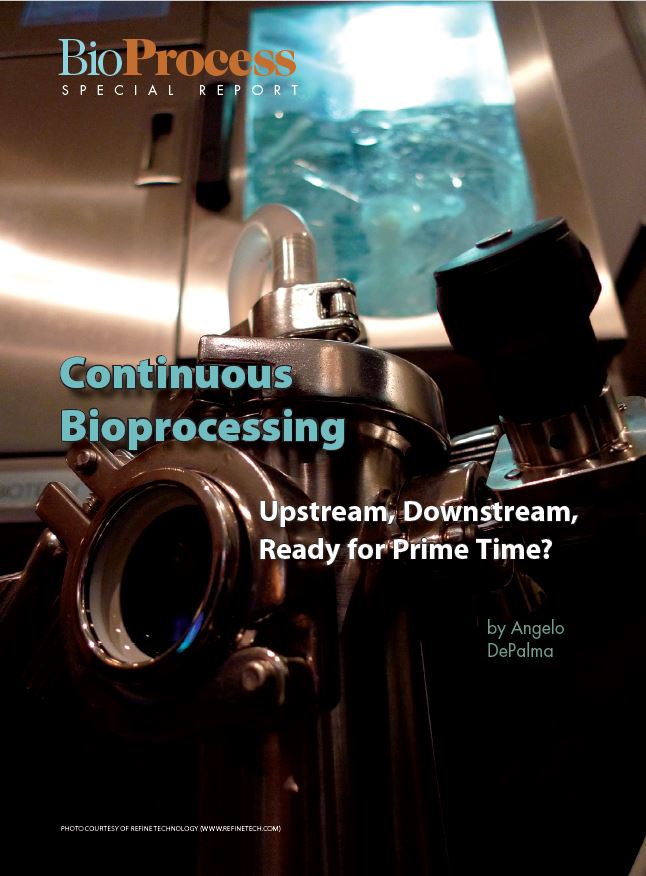| Once an engineering curiosity and smallscale laboratory technique, continuous bioprocessing has evolved in just a few short years to a topic of intense and increasing interest to most bioprocessors. Critics point to a steep learning/adoption curve, but that is nothing new in biomanufacturing.Andrew Zydney is a distinguished professor of chemical engineering at Pennsylvania State University. He has noted these challenges facing continuous processing: commercially unproven unit operations (especially downstream), a lack of equipment robustness, sterility concerns, and uncertain development timelines (1).
Zydney acknowledges that bioprocessors faced similar issues during the dawn of therapeutic biotechnology in the 1980s and then again two decades later with the emergence of single-use processing. “These issues all relate to change,” he says. “The solutions were addressed and answered in batch processing to everyone’s relative satisfaction. None are insurmountable in continuous mode, but companies must put in the time and effort to address these concerns to new manufacturing platforms.” Read the rest of this Special Report in the eBook – Just fill out the form to view and download it. Reference |
Get the eBook Now
|
2 thoughts on “Special Report on Continuous Bioprocessing: Upstream, Downstream, Ready for Prime Time?”
Comments are closed.


The issue is unavailable it seems 🙁
Page not found
Error 404
Sorry, the page you were looking for at this URL was not found.
This issue has been fixed. Sorry for the inconvenience!